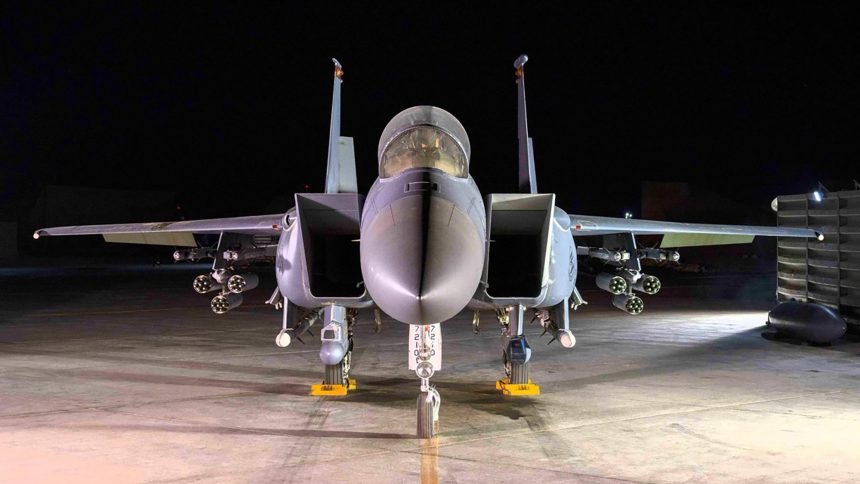New F-15E Laser-Guided Rocket System: A Game-Changer in Counter-Drone Warfare
The U.S. Air Force has taken a significant step forward in aerial warfare with the latest modifications to the F-15E Strike Eagle. A recent test flight revealed the aircraft carrying an impressive 42 laser-guided rockets, marking a shift in drone and cruise missile defense strategies.
The Evolution of the F-15E's Arsenal
Traditionally, the F-15E Strike Eagle has been known for its versatility in air-to-ground and air-to-air combat. However, the emergence of unmanned aerial threats has necessitated a new approach. The integration of Advanced Precision Kill Weapon System II (APKWS II) rockets into the Strike Eagle’s arsenal is a game-changer. These 70mm Hydra rockets, equipped with laser guidance, offer a cost-effective and high-volume solution to counter drones and slow-moving aerial threats.
The Significance of the Test Flight
The recent test flight, conducted by the 96th Test Wing at Eglin Air Force Base, showcased the aircraft carrying six seven-shot rocket pods, totaling 42 rockets. This configuration allows for multiple engagement opportunities per sortie, significantly increasing the aircraft’s effectiveness in counter-drone operations.
Gabriel Myers, spokesperson for the 96th Test Wing, emphasized the importance of this development: "By working at speed to ensure advanced capabilities have the intended effects, we increase warfighter readiness and lethality."
Cost-Effective Defense Against Drone Threats
One of the standout advantages of the APKWS II rockets is their affordability. Compared to traditional air-to-air missiles like the AIM-9X Sidewinder ($450,000) or the AIM-120 AMRAAM ($1 million), the APKWS II guidance kit costs between $15,000 and $20,000. This makes them an economical yet highly effective solution for intercepting drones and subsonic cruise missiles.
Real-World Applications
The need for high-capacity aerial defense became evident during the April 2024 saturation attack on Israel, where F-15E crews reportedly exhausted their air-to-air missiles and had to rely on their M61 Vulcan cannon. The integration of APKWS II rockets ensures that future engagements will not be limited by missile supplies.
The F-15E Strike Eagle’s new laser-guided rocket arsenal represents a major leap forward in aerial warfare. With cost-effective, high-volume, and precision-guided capabilities, this modification enhances the aircraft’s ability to counter drone threats effectively. As drone warfare continues to evolve, innovations like these will be crucial in maintaining air superiority.
The Advanced Precision Kill Weapon System II (APKWS II) is a laser-guided rocket system designed to convert Hydra 70 unguided rockets into precision-guided munitions. Here are its key specifications:
Length: 73.8 inches (1.87 meters)
Diameter: 2.75 inches (70 mm)
Wingspan: 9.55 inches (24.3 cm)
Weight: 32 pounds (15 kg)
Speed: Up to 1,000 meters per second (Mach 2.9)
Range:
Rotary-wing aircraft: 1,100–5,000 meters (0.68–3.11 miles)
Fixed-wing aircraft: 2–11 kilometers (1.2–6.8 miles)
Guidance System: Semi-active laser homing
Circular Error Probable (CEP): Less than 0.5 meters
Warhead Options: M151 or Mk 152 10-pound high-explosive warhead







